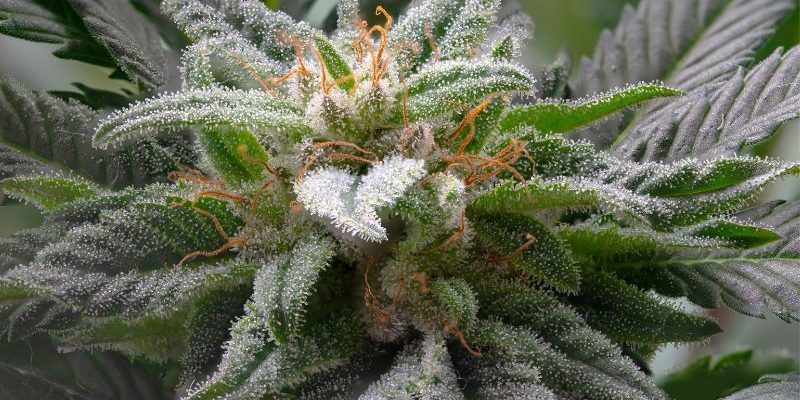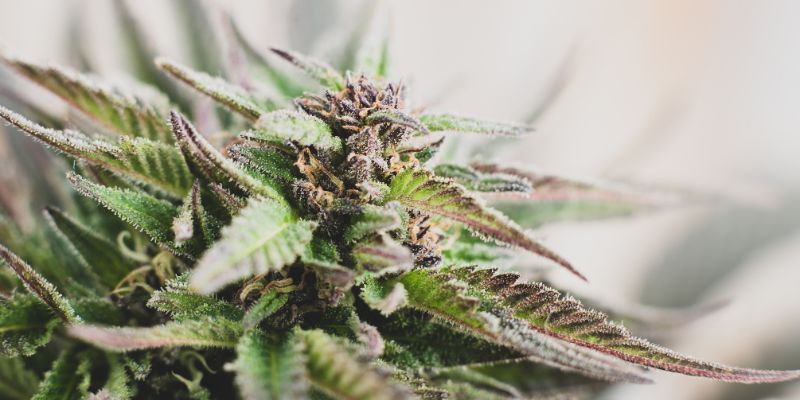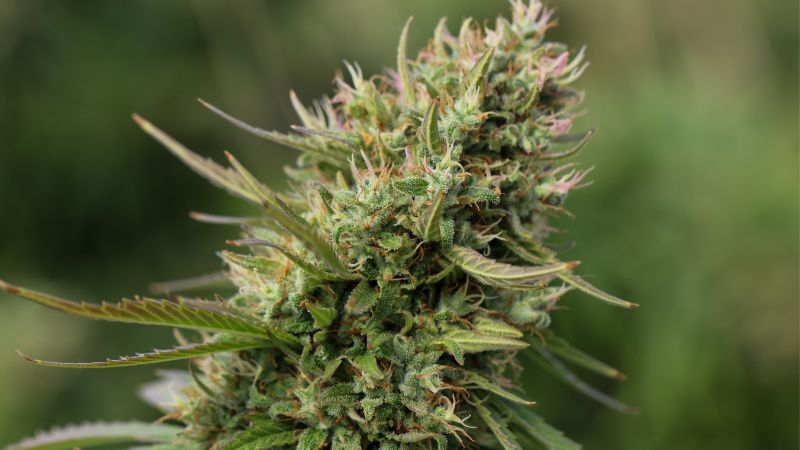
Recovery Reimagined: Using Cannabis for Post-Workout Muscle Recovery
In the pursuit of peak physical performance, the realm of fitness constantly seeks new avenues to optimize recovery and enhance muscle regeneration post workout. As

Cannabis has a long and intriguing history that stretches back thousands of years. The exact origins of this complex plant are somewhat debated, but it is believed to have originated in Central Asia, in the region encompassing present-day Mongolia and Siberia. Cannabis sativa, Cannabis indica, and Cannabis ruderalis are the three main species of cannabis.
Early human civilizations discovered the versatile nature of cannabis and began cultivating it for various medical and recreational purposes. The plant’s fibers were used to create textiles, ropes, and paper, while its seeds provided a valuable source of food and oil. Cannabis was also recognized for its medicinal properties and was utilized in ancient Chinese, Indian, and Egyptian traditional medicine.
In China, cannabis was mentioned in historical texts dating back to 2700 BCE, and it played a significant role in various aspects of Chinese culture. The Chinese used cannabis for its fibers, which were woven into textiles, and they also recognized its medicinal properties for treating a wide range of ailments.
In India, cannabis has a long-standing association with religious and spiritual practices. It is mentioned in sacred Hindu texts known as the Vedas, dating back to around 1500 BCE. Cannabis, referred to as “bhang” or “ganja,” was used in religious ceremonies and as an aid to meditation and yoga.
Egyptians also cultivated cannabis for its fibers and utilized it in various industries. Archaeological evidence suggests that cannabis was used in the production of ropes, fabrics, and even as a component in ancient Egyptian burial rituals.
Over centuries, cannabis spread to different parts of the world through trade routes and exploration. It made its way to Europe, Africa, the Americas, and other regions, where its uses diversified further. In the United States, cannabis was initially grown as a cash crop, particularly for hemp fiber production, and was widely cultivated until the early 20th century.
In the 20th century, cannabis faced increasing regulation and prohibition due to concerns about its psychoactive properties. However, in recent years, there has been a resurgence of interest in cannabis for medicinal and recreational purposes, leading to its legalization or decriminalization in various countries and states.
The study of cannabis and its history continues to evolve, with ongoing research shedding light on its chemical constituents, therapeutic potential, and societal impact. Exploring the origins and history of popular cannabis strains provides us with a deeper appreciation for the diverse and fascinating world of cannabis. From the legendary White Widow, with its frosty appearance and balanced effects, to the renowned Blue Dream, beloved for its harmonious blend of indica and sativa qualities, and the iconic Super Silver Haze, celebrated for its uplifting and creative high, each marijuana strain has a story to tell. Keep reading for a look into the history behind some of the most popular marijuana strains.

Cannabis plants, also known as marijuana or hemp, can be classified into three main types: Cannabis sativa, Cannabis indica, and Cannabis ruderalis. While they share common characteristics, they also possess distinct features.
Cannabis sativa is one of the three main types of cannabis plants, known for its distinct characteristics and effects. Sativa plants are typically taller in height, with long and slender leaves. They thrive in warmer climates and have longer flowering cycles compared to other cannabis varieties.
Cannabis sativa strains are often associated with uplifting and energizing effects, making them popular for daytime use. The high produced by sativa strains is typically described as cerebral and stimulating, promoting creativity, focus, and sociability. Many users appreciate sativa strains for their ability to provide a boost of energy and mental clarity, making them suitable for activities that require concentration or social interaction.
Due to their higher THC content compared to other cannabis varieties, sativa strains are often sought after for their potential mood-enhancing properties. They may also provide relief for certain medical conditions, such as depression, fatigue, and attention disorders. However, it’s important to note that individual responses to cannabis can vary, and some people may experience increased anxiety or paranoia with certain sativa strains.
In terms of aroma and flavor, cannabis sativa strains can exhibit a wide range of profiles, including fruity, citrusy, spicy, and earthy notes. This diversity is a result of various terpenes present in the plant, which contribute to its unique scent and taste.
Cannabis indica is another type of cannabis plant, known for its distinct characteristics and effects that differ from Cannabis sativa. Indica plants are typically shorter and bushier in stature, with broader leaves compared to sativa plants. They are well-suited for colder climates and have shorter flowering cycles.
Cannabis indica strains are known for their relaxing and sedating effects, making them popular for evening or nighttime use. The high produced by indica strains is often described as a “body high” or “stoned” feeling, promoting physical relaxation, pain relief, and a sense of tranquility. Many users appreciate indica strains for their potential to alleviate stress, anxiety, and insomnia. They may also be beneficial for those seeking relief from muscle spasms, chronic pain, and inflammation.
Indica strains tend to have higher levels of cannabinoids, particularly CBD (cannabidiol), which is known for its potential therapeutic properties. The higher CBD content in indica strains can contribute to their more pronounced relaxing and calming effects, as CBD is believed to counterbalance the psychoactive effects of THC (tetrahydrocannabinol).
In terms of aroma and flavor, cannabis indica strains can exhibit a range of profiles, including earthy, herbal, skunky, or sweet notes. Just like sativa strains, these profiles are determined by the presence of different terpenes in the plant.
Cannabis ruderalis is one of the three main types of cannabis plants, although it is less widely known and cultivated compared to Cannabis sativa and Cannabis indica. It is primarily native to regions with harsh climates, such as parts of Eastern Europe, Central Asia, and Russia.
One of the distinguishing characteristics of Cannabis ruderalis is its autoflowering trait. Unlike sativa and indica strains, which rely on changes in light cycles to transition from the vegetative to flowering stage, ruderalis plants automatically start flowering based on age rather than light exposure. This unique trait makes them suitable for growing in environments with limited sunlight or inconsistent lighting conditions.
Cannabis ruderalis plants are generally smaller in size, with lower THC levels compared to sativa and indica varieties. They typically contain higher levels of CBD (cannabidiol) relative to THC, which can make them attractive for those seeking the potential therapeutic benefits of CBD without the strong psychoactive effects associated with THC.
While Cannabis ruderalis strains are less commonly grown for recreational use due to their lower THC content, they have gained attention in recent years for their contributions to the development of autoflowering hybrid strains. Breeders have crossed ruderalis genetics with sativa and indica strains to create hybrids that retain the autoflowering trait while incorporating desired characteristics, such as higher THC levels or specific flavor profiles.
Cannabis ruderalis is often used in the breeding process to introduce autoflowering genetics into strains, providing a more convenient and predictable cultivation experience for growers. These hybrid strains are popular among home growers, as they require less maintenance and can complete their growth cycle in a shorter time.
Overall, while Cannabis ruderalis may not be as well-known or widely cultivated as other cannabis types, its unique autoflowering characteristic has made it an important contributor to the development of modern cannabis hybrids and has opened up new possibilities for cultivators.

OG Kush is an iconic and influential cannabis strain that has earned a legendary status within the cannabis community. Known for its distinct aroma, potent effects, and widespread popularity, OG Kush has become a staple in dispensaries around the world. While the precise origins of OG Kush are subject to debate, its history can be traced back to the early 1990s in California, specifically the San Fernando Valley.
The “OG” in its name is often believed to stand for “Ocean Grown” or “Original Gangster,” reflecting its West Coast roots and association with the Southern California cannabis scene. OG Kush gained popularity through its unique combination of effects, including a powerful body high and intense mental euphoria.
The specific genetic lineage of OG Kush is somewhat elusive. It is believed to be a hybrid strain, likely resulting from a cross between Chemdawg, a potent and pungent strain, and a landrace strain from the Hindu Kush region of Afghanistan. This blend created a cultivar that quickly gained a dedicated following due to its exceptional potency and complex flavor.
OG Kush’s influence began to spread beyond California in the early 2000s. Its popularity surged as it won multiple Cannabis Cup awards and gained recognition for its robust aroma, often described as a blend of earthy, citrus, and pine notes.
Over time, the strain’s genetics have given rise to certain strains with numerous phenotypes and variations, leading to the development of various OG Kush hybrids and crosses. These offspring strains often bear the “OG” label, indicating their lineage.
OG Kush has become a staple strain in the modern cannabis market, known for its ability to induce relaxati on, euphoria, and creativity. It has influenced the breeding and development of many other popular strains, contributing to the diverse landscape of cannabis varieties available today.
While OG Kush’s exact origins remain somewhat shrouded in mystery, its impact on the cannabis community is undeniable. It has earned a reputation as an iconic strain, with its distinct flavor, potent effects, and cultural significance firmly establishing its place in the chronicles of cannabis history.

Sour Diesel, often referred to as Sour D, is a highly popular and influential cannabis strain known for its pungent aroma and energizing effects. The history and origins of Sour Diesel can be traced back to the 1990s, with its roots firmly planted in the East Coast of the United States.
The exact genetic lineage of Sour Diesel is a topic of debate and speculation within the cannabis community. It is widely believed to be a hybrid strain, potentially resulting from a cross between Chemdawg, Northern Lights, and Skunk No. 1. These parent strains are renowned for their potency and distinct characteristics.
Sour Diesel gained prominence in New York City, particularly within the underground cannabis market. It quickly became a favorite among cannabis enthusiasts for its unique combination of a potent cerebral high and an uplifting, energizing effect.
The strain’s name, “Sour Diesel,” stems from its strong diesel-like aroma, which is often accompanied by notes of citrus and earthiness. The scent is so distinct that it has become a recognizable signature of Sour Diesel and its various phenotypes.
Sour Diesel’s popularity expanded beyond the East Coast, and it gained widespread recognition in the 2000s, particularly after winning several High Times Cannabis Cup awards. Its reputation as a go-to strain for daytime use, creativity, and socializing continued to grow.
The influence of Sour Diesel extended into the breeding and development of other cannabis strains. It became a sought-after genetic parent for hybridization, leading to the creation of numerous Sour Diesel crosses and hybrids that feature its unique characteristics.
Today, Sour Diesel remains a staple strain in the cannabis market, loved for its potent effects and memorable aroma. It has played a significant role in shaping the modern cannabis landscape and continues to be cherished by both medical and recreational users.
While the precise origins of Sour Diesel may not be definitively established, its impact and enduring popularity are a testament to its unique qualities and the cultural significance it holds within the cannabis community.

Blue Dream is a highly acclaimed and beloved cannabis strain that has gained widespread popularity for its well-balanced effects and appealing aroma. The origins of Blue Dream can be traced back to California, specifically the Santa Cruz area, where it was created through a carefully selected crossbreeding process.
The genetic lineage of Blue Dream is believed to be a cross between the indica-dominant Blueberry strain and the sativa-dominant Haze strain. Blueberry, known for its fruity flavors and relaxing effects, was combined with Haze, a legendary sativa strain valued for its uplifting and cerebral qualities. This combination resulted in a hybrid strain that exhibits a harmonious blend of both indica and sativa characteristics.
Blue Dream was first introduced in the early 2000s and quickly gained recognition and popularity among cannabis farmers and enthusiasts in California. It soon became one of the most sought-after strains in the state and eventually spread its reputation throughout the United States and beyond.
The name “Blue Dream” is derived from its blueberry lineage and the dreamy, euphoric effects it induces. It is also known for its distinctive aroma, which combines sweet berry notes with hints of earthiness and spice.
Blue Dream’s well-balanced psychoactive effects have contributed to its enduring appeal. It offers a gentle body relaxation combined with a creative and uplifting cerebral high. This versatile combination makes it suitable for a variety of occasions and activities, from socializing to creative endeavors.
Due to its immense popularity, Blue Dream has become a widely cultivated strain, and it has also been used in breeding programs to create new hybrids and variations. Its genetic influence can be seen in many modern cannabis strains, as breeders continue to explore its desirable traits.
Blue Dream’s reputation has been further solidified by its consistent presence at cannabis competitions, where it has won several awards for its exceptional quality and effects. It has become a favorite among both recreational and medical marijuana users, who appreciate its versatility and potential therapeutic benefits.
In summary, Blue Dream’s origins can be traced back to California, where it was carefully bred by combining the genetics of Blueberry and Haze. Its balanced effects, delightful aroma, and widespread popularity have firmly established Blue Dream as an iconic and influential strain in the cannabis world.
Strawberry Cough is a distinctive and flavorful cannabis strain that has gained a loyal following for its unique taste and uplifting effects. The history and origins of Strawberry Cough can be traced back to the early 2000s in the United States.
The exact genetic lineage of Strawberry Cough is not definitively known, but it is believed to be a cross between a landrace sativa strain and a hybrid strain. The sativa lineage contributes to the strain’s uplifting and energizing effects, while the hybrid genetics may provide some indica traits for balance.
Strawberry Cough was reportedly developed by a breeder named Kyle Kushman, who selectively bred different strains to create a variety with a distinct strawberry scent and flavor. The name “Cough” was added to reflect the strain’s reputation for causing coughing fits due to its potent and expansive smoke.
Strawberry Cough gained attention and popularity for its unique sensory experience. The aroma of fresh strawberries fills the air when the buds are broken apart, giving it its characteristic appeal. The flavor profile of Strawberry Cough is often described as sweet and berry-like, reminiscent of freshly picked strawberries.
As Strawberry Cough gained recognition, its reputation spread within the cannabis community. It became a favorite strain among both recreational and medicinal users for its uplifting and mood-enhancing effects. Many users report feeling a surge of creativity, mental clarity, and sociability when consuming Strawberry Cough.
Over time, Strawberry Cough became widely available and was cultivated by various breeders and growers, leading to the development of different phenotypes and variations of the strain. These variations can exhibit slight differences in flavor, potency, and overall effects, while still maintaining the distinct strawberry essence that characterizes Strawberry Cough.
The popularity of Strawberry Cough has extended beyond its American origins, and it has become a sought-after strain in markets around the world. Its unique flavor, uplifting effects, and overall appeal have made it a staple in dispensaries and cannabis competitions alike.
In summary, Strawberry Cough is a cannabis strain with origins in the early 2000s, believed to be bred by Kyle Kushman. Its distinct strawberry aroma and flavor, combined with its uplifting effects, have propelled Strawberry Cough to prominence in the cannabis community, making it a beloved and cherished strain among enthusiasts globally.

White Widow is a legendary cannabis strain that has achieved worldwide recognition for its potency, resinous buds, and balanced effects. The history and origins of White Widow can be traced back to the Netherlands in the early 1990s.
White Widow was created by Dutch breeders as a cross between a Brazilian sativa landrace strain and a resin-heavy South Indian indica. The specific details of its genetic lineage remain closely guarded secrets within the breeding com munity.
The strain gained prominence in the Dutch coffee shop scene and quickly became a favorite among locals and international visitors. Its name, White Widow, is derived from its distinctive appearance, characterized by frosty white trichomes that cover its buds, creating a snowy, glistening effect.
White Widow gained further recognition after winning the High Times Cannabis Cup in 1995, solidifying its reputation as a top-tier strain. Its success propelled it into the global cannabis market, where it gained a massive following.
The effects of White Widow are well-balanced, combining the energizing cerebral stimulation of sativa genetics with the deep relaxation and physical tranquility of indica traits. Users often report feeling a wave of euphoria and creativity accompanied by a calming body buzz.
White Widow’s popularity led to its widespread cultivation and the development of various phenotypes and hybrids. It has been used in breeding programs to create new strains, often contributing its resin production and desirable effects to offspring.
Today, White Widow remains one of the most recognizable and sought-after strains in the cannabis world. Its potency, versatility, and iconic appearance have made it a staple in dispensaries and coffee shops worldwide.
The Northern Lights strain is one of the most famous and influential cannabis strains in the world. Its precise origins are somewhat debated, but it is widely believed to have originated in the United States, specifically in the state of Washington, during the 1970s. The exact genetic lineage of Northern Lights is not known with certainty, but it is thought to be a result of crossing Afghani landrace strains with Thai landrace strains.
The person credited with the development of Northern Lights is a breeder known as “The Indian” or “The Indian Hempman.” He is said to have collected and preserved a wide variety of cannabis seeds during his travels and used them to create new hybrid strains. Northern Lights emerged as one of the standout varieties from his breeding efforts.
This particular strain gained popularity in the 1980s when it made its way to the Netherlands. Dutch breeders recognized its exceptional qualities and began working with it, stabilizing and refining its genetics. The Dutch seed banks, particularly Sensi Seeds, played a significant role in further developing and distributing Northern Lights around the world.
Northern Lights quickly garnered a reputation for its exceptional potency, resin production, and its ability to induce deeply relaxing and sedative effects. Its robust indica characteristics made it a favorite among cultivators and consumers alike. It became a staple strain for indoor growers due to its manageable height, fast flowering time, and high yields.
Over the years, Northern Lights has been used as a genetic foundation for creating numerous other popular strains, as breeders incorporated its desirable traits into their breeding programs. It has won multiple awards in various cannabis competitions and continues to be highly regarded in the cannabis community.
Today, Northern Lights remains a sought-after strain for its potent and long-lasting effects, which typically induce a deeply relaxing body high. Its earthy, sweet, and spicy aroma adds to its appeal. Northern Lights has had a significant impact on the development of the cannabis industry and has become a classic and iconic strain in the world of cannabis cultivation.

Whether you’re seeking relaxation, creative stimulation, pain relief, or a combination of benefits, there is a strain out there for you. From the energizing and mood lifting highs of Sativas to the soothing and sedating effects of Indicas, and the balanced experiences offered by Hybrids, each strain brings its unique character to the table. Whether you’re a seasoned connoisseur or a curious beginner, the diverse selection of marijuana strains invites you to embark on an exciting journey of exploration, discovery, and enjoyment. Remember, always consume responsibly and adhere to the laws and regulations in your area. Happy exploring!

In the pursuit of peak physical performance, the realm of fitness constantly seeks new avenues to optimize recovery and enhance muscle regeneration post workout. As

In recent years, a notable trend has emerged within the cannabis industry: celebrities stepping into the spotlight as entrepreneurs and advocates for cannabis legalization. From

Introduction Microdosing THC (Delta-9-tetrahydrocannabinol), the primary psychoactive compound in cannabis, represents a nuanced approach to cannabis consumption, gaining traction for its promise of reaping therapeutic

Introduction to Cannabis Legalization in Ireland In recent years, the global landscape of cannabis legalization has undergone a seismic shift, with countries across the world
Protected by the United States Agriculture Improvement Act of 2018
FDA DISCLAIMER The statements made regarding these products have not been evaluated by the Food and Drug Administration. The efficacy of these products has not been confirmed by FDA-approved research. These products are not intended to diagnose, treat, cure or prevent any disease. All information presented here is not meant as a substitute for or alternative to information from health care practitioners. Please consult your health care professional about potential interactions or other possible complications before using any product. The Federal Food, Drug, and Cosmetic Act require this notice.
Puro Cannagars, LLC. requires all clients to follow local and federal regulatory guidelines as it pertains with the use and distribution of Delta 8 and all components within Puro Cannagar products. Purchasing from Puro Cannagars constitutes as agreeing to conducting own due diligence on Puro Cannagar products, and following local and federal guidelines on resale, use, and distribution of said products. If it is found that clients are involved in illegal activity, Puro Cannagars, LLC reserves the right to discontinue service without notice.